
Transport in Spain is characterised by an extensive network of roads, railways, rapid transit, air routes, and ports. Its geographic location makes it an important link between Europe, Africa, and the Americas. Major forms of transit generally radiate from the capital, Madrid, located in the centre of the country, to link with the capitals of the autonomous communities.
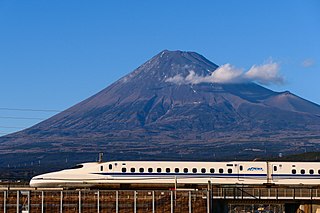
High-speed rail (HSR) is a type of rail network utilizing trains that run significantly faster than those of traditional rail, using an integrated system of specialised rolling stock and dedicated tracks. While there is no single standard that applies worldwide, lines built to handle speeds above 250 km/h (155 mph) or upgraded lines in excess of 200 km/h (124 mph) are widely considered to be high-speed.

Inter-city rail services are express passenger train services that run services that connect cities over longer distances than commuter or regional trains. They include rail services that are neither short-distance commuter rail trains within one city area nor slow regional rail trains stopping at all stations and covering local journeys only. An inter-city train is typically an express train with limited stops and comfortable carriages to serve long-distance travel.

Rail transport in Spain operates on four rail gauges and services are operated by a variety of private and public operators. The total route length in 2012 was 16,026 km.

The Trans-European Transport Network (TEN-T) is a planned network of roads, railways, airports and water infrastructure in the European Union. The TEN-T network is part of a wider system of Trans-European Networks (TENs), including a telecommunications network (eTEN) and a proposed energy network. The European Commission adopted the first action plans on trans-European networks in 1990.

The Chicago Hub Network is a collection of proposed fast conventional and high-speed rail lines in the Midwestern United States including 3,000 miles (5,000 km) of track. Since the 1990s, there have been multiple proposals to build a network from Chicago to destinations such as Milwaukee, Madison, Minneapolis, Indianapolis, Detroit, Kansas City, St. Louis, Cleveland, Cincinnati, and Louisville. In addition, the rail lines from the Chicago hub would connect through to cities in Canada. Eastern routes from Chicago would also blend into the Ohio Hub network. In addition to providing better connections between Midwestern cities, the projects are intended to reduce or eliminate the operating subsidies that American passenger train routes currently require.

The Southeast Corridor (SEC) is a proposed passenger rail transportation project in the Mid-Atlantic and Southeastern United States to extend high-speed passenger rail services from Washington, D.C. south through Richmond, Petersburg with a spur to Norfolk in Virginia through Raleigh, Durham, Greensboro and south to Charlotte in North Carolina and connect with the existing high-speed rail corridor from D.C. to Boston, Massachusetts known as the Northeast Corridor. Since first established in 1992, the U.S. Department of Transportation (USDOT) has extended the corridor to Atlanta, Georgia and Macon, Georgia; Greenville, South Carolina; Columbia, South Carolina; Jacksonville, Florida; and Birmingham, Alabama.

A transport corridor is a generally linear area that is defined by one or more modes of transportation crossing the limits of more than one city or county like highways, railroads or public transit which share a common destination. Development often occurs around transportation corridors because they carry so many people, creating linear agglomerations like the Las Vegas Strip or the linear form of many neighborhood retail areas.

Plans for high-speed rail in the United States date back to the High-Speed Ground Transportation Act of 1965. Various state and federal proposals have followed. Despite being one of the world's first countries to get high-speed trains, it failed to spread. Definitions of what constitutes high-speed rail vary, including a range of speeds over 110 mph (180 km/h) and dedicated rail lines. Inter-city rail with top speeds between 90 and 125 mph is sometimes referred to in the United States as higher-speed rail.

Croatian Railways is the national railway company of Croatia. Croatia is a member of the International Union of Railways (UIC). The UIC Country Code for Croatia is 78. The Croatian rail network carried 20.270 million passengers in 2018.

The Perpignan–Barcelona high-speed line is an international high-speed rail line between France and Spain. The line consists of a 175.5-kilometre (109.1 mi) railway, of which 24.6 km (15.3 mi) are in France and 150.8 km (93.7 mi) are in Spain. It crosses the French–Spanish border via the 8.3-kilometre (5.2 mi) Perthus Tunnel bored under the Perthus Pass, connecting two cities on opposite sides of the border, Perpignan in Roussillon, France, and Figueres in Catalonia, Spain. The line extends to Barcelona, and this part is sometimes referenced as an extension of the Madrid–Barcelona high-speed rail line. The Perpignan–Barcelona line is a part of the Mediterranean Corridor.
This article lists planned or proposed high-speed rail projects, arranged by country. Although many nations have done preliminary feasibility studies, many lines are eventually shelved or postponed due to high cost, and only a few nations of those proposing are actively building high-speed rail lines. Planned or proposed lines are therefore separated here from lines that are under construction, some nations having both. High-speed rail is public transport by rail at speeds in excess of 200 km/h (125 mph).
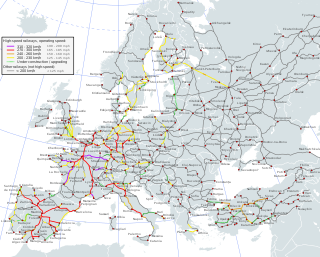
High-speed rail (HSR) has developed in Europe as an increasingly popular and efficient means of transport. The first high-speed rail lines on the continent, built in the 1970s, 1980s, and 1990s, improved travel times on intra-national corridors. Since then, several countries have built extensive high-speed networks, and there are now several cross-border high-speed rail links. Railway operators frequently run international services, and tracks are continuously being built and upgraded to international standards on the emerging European high-speed rail network.
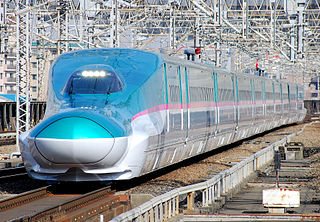
Indian Railways does not currently have any operational high-speed rail lines, though a total of eight corridors have been approved, with the corridor between Mumbai and Ahmedabad under construction. As of 2023, the fastest train services in India are the Gatimaan Express and Rani Kamalapati (Habibganj)–Hazrat Nizamuddin Vande Bharat Express with peak operational speed of 160 km/h (99 mph) on the Tughlakabad - Agra Cantonment section of the route.
The North–South express railway is a proposed high speed railway in Vietnam. The line would begin in Lạng Sơn, crossing Bắc Giang, Bắc Ninh, Hanoi, Hà Tây, Hà Nam, Ninh Bình, Thanh Hóa, Nghệ An, Hà Tĩnh, Quảng Bình, Quảng Trị, Thừa Thiên-Huế, Đà Nẵng, Quảng Nam, Quảng Ngãi, Bình Định, Phú Yên, Khánh Hòa, Ninh Thuận, Bình Thuận, Đồng Nai, Bình Dương, Ho Chi Minh City, Long An, Tiền Giang, Vĩnh Long, Cần Thơ, Hậu Giang, Sóc Trăng, Bạc Liêu and ending in Cà Mau. The rail line would connect the two most urbanised areas in Vietnam which are Hanoi in the North's Red River Delta in the north and Ho Chi Minh City in the South's Mekong River Delta. The total proposed length would be 2,070 kilometres (1,290 mi), compared with the 1,726-kilometre (1,072 mi) of the old railway line. The cost of the line is estimated at US$55.85 billion, to be funded by official development assistance from Japan and by the Vietnamese government itself. The project is planned to be implemented in three phases: Lang Son to Hanoi (170 km); Hanoi to Vinh city (285 km); Vinh City to Nha Trang (896 km); Nha Trang to Ho Chi Minh City (364 km); Ho Chi Minh City to Can Tho (139 km); Can Tho to Ca Mau (216 km). Construction activities on the first phase are expected to commence in 2020, and the whole project is scheduled for completion in 2050. This project is part of the country's railway transport development strategy by 2020 with a vision to 2050. The project is also part of the Trans-Asian railway network.
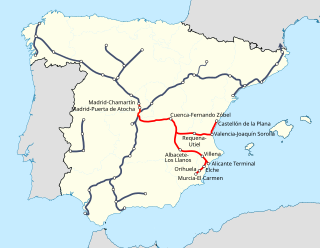
The Madrid–Levante high-speed network is a network of high-speed rail lines that connects Madrid with the Mediterranean coast of the Levante Region, specifically with Castilla-La Mancha, the Valencian Community and the Murcia Region autonomous communities.
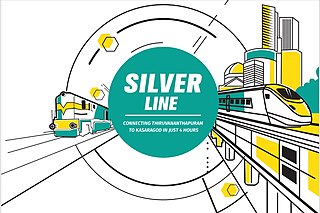
The Silver Line is a proposed higher-speed rail line in India that would connect Thiruvananthapuram, the capital city, and Kasaragod of Kerala state. It will have an operating speed of 200 kilometres per hour (120 mph), [Maximum Design Speed: 220 kmph, ] allowing trains to cover the 532-kilometre (331 mi) distance in less than four hours, compared to the present 10 to 12 hours it takes to traverse this distance. Thiruvananthapuram, Kollam, Chengannur, Kottayam, Kochi, Thrissur, Tirur, Kozhikode, Kannur and Kasaragod will be the stations in this corridor. The project is temporarily halted by the state government till the Central government approval.
The Atlantic Axis high-speed rail line, also called Atlantic Corridor high-speed rail line, is a high-speed railway line that links A Coruña, Santiago de Compostela, Pontevedra and Vigo in Spain. The Atlantic Axis was inaugurated in April 2015.
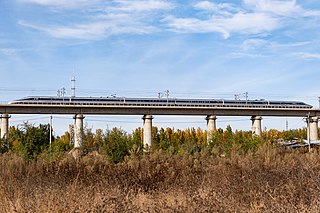
The Beijing–Harbin, Beijing–Hong Kong (Macau) corridor is a high-speed rail passage connecting Harbin in Heilongjiang province to the Hong Kong and Macau Special Administrative Regions via Beijing. The passage will pass through the cities of Changchun, Shenyang, Beijing, Shijiazhuang, Zhengzhou, Wuhan, Changsha, and Guangzhou before splitting into two lines: one passing through Shenzhen before terminating at Hong Kong, the other passing through Zhuhai before terminating at Macau.














